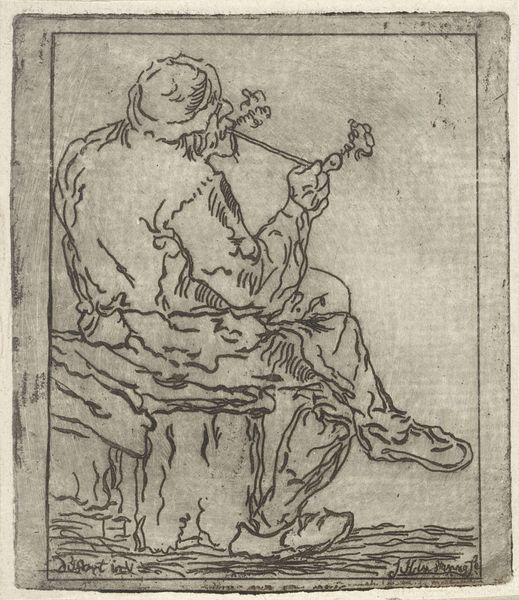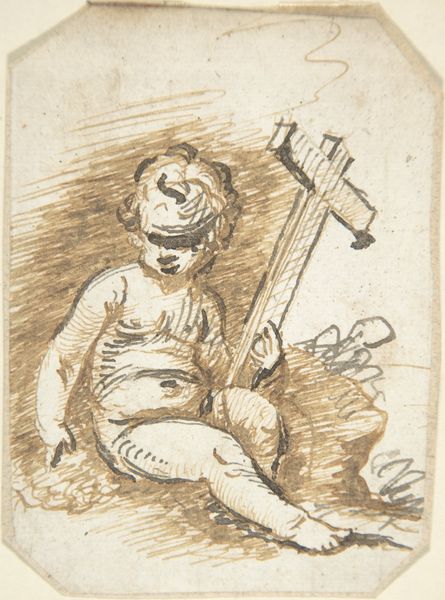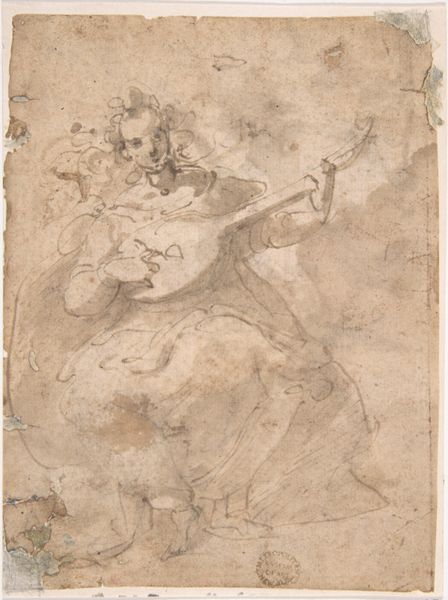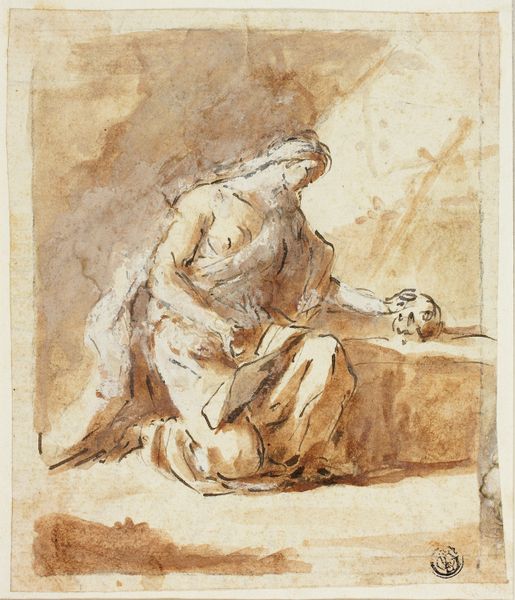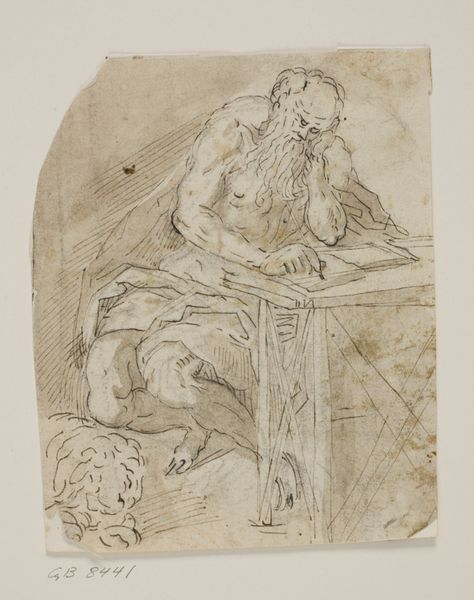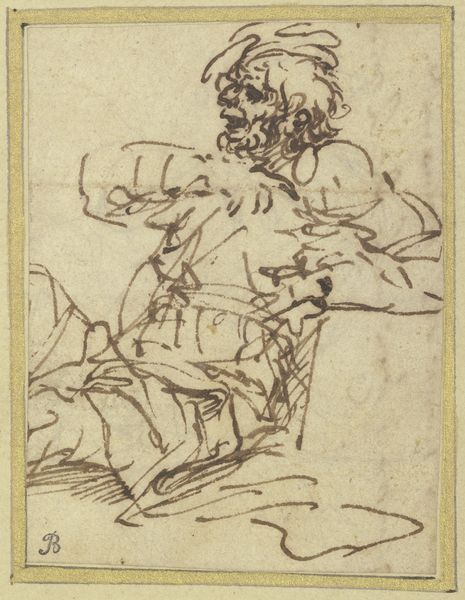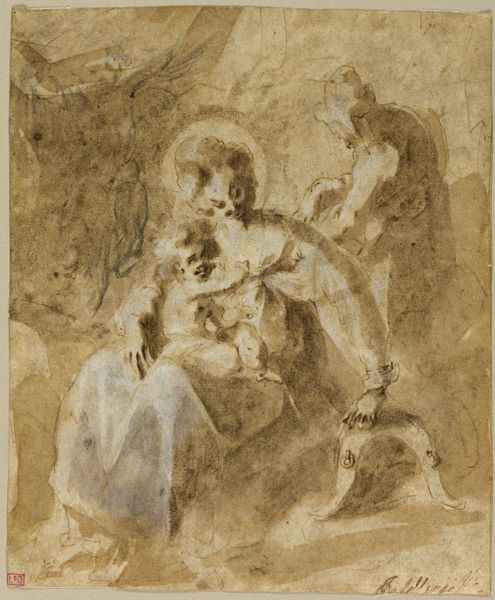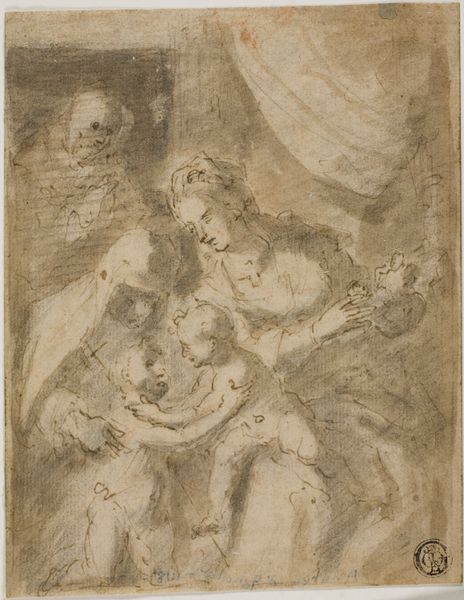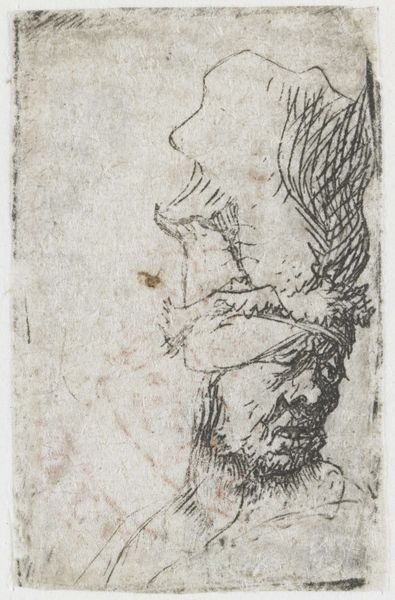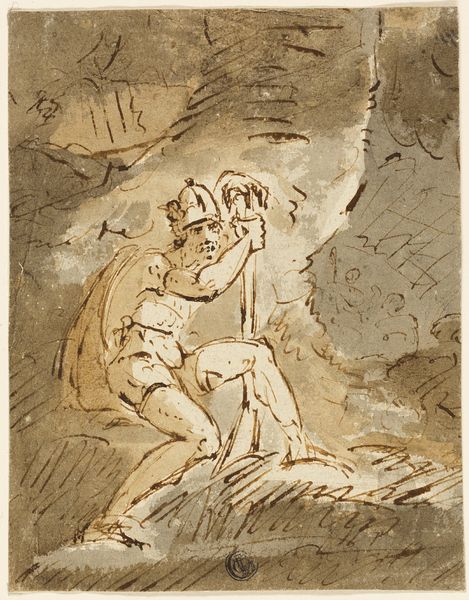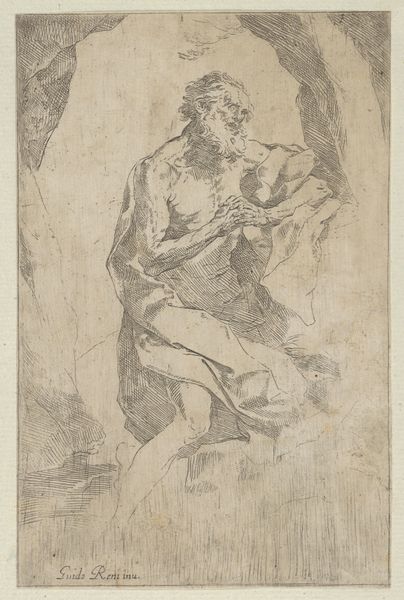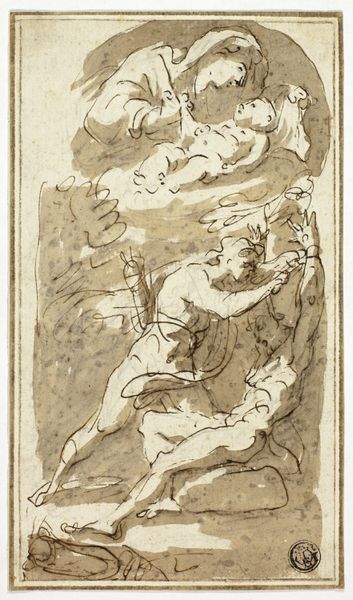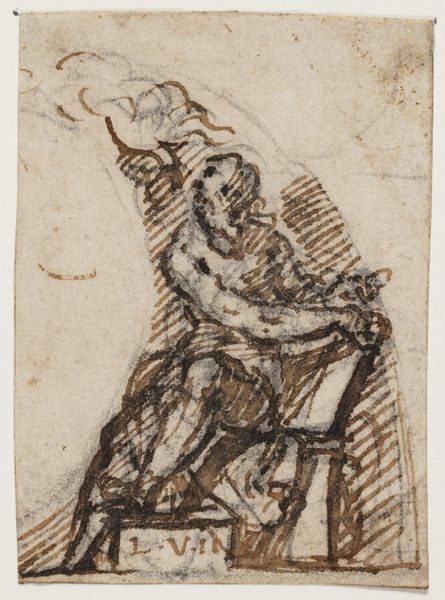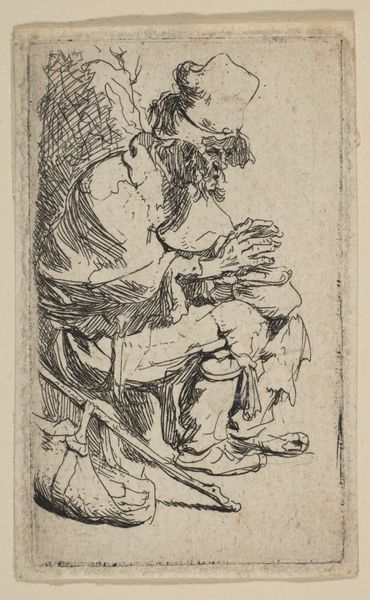
drawing, watercolor, ink
#
portrait
#
drawing
#
ink painting
#
figuration
#
11_renaissance
#
watercolor
#
ink
#
coloured pencil
#
history-painting
Dimensions: overall: 13.5 x 11.2 cm (5 5/16 x 4 7/16 in.)
Copyright: National Gallery of Art: CC0 1.0
Hans Steidlin rendered this image of Janus with pen and brown ink, heightened with white, on paper. The figure, adorned with a crown and beard, embodies duality, looking simultaneously to the past and the future. Janus, the Roman god of beginnings, transitions, and doorways, traditionally holds a key and a staff. The key unlocks the future while the staff guides through the passage of time. This dichotomy isn't unique to Roman culture. Consider Shiva in Hinduism, the destroyer and creator, or the Egyptian deity Anubis, a guardian of the afterlife, guiding souls through transition. The representation of Janus speaks to our collective memory and the human condition, our constant negotiation between looking back and moving forward. The emotional power lies in the subconscious recognition of these archetypes, these universal symbols of the cyclical nature of existence. Janus is not just a Roman god but an enduring symbol, resurfacing in various forms throughout history, reflecting our perennial fascination with time and change.
Comments
No comments
Be the first to comment and join the conversation on the ultimate creative platform.
